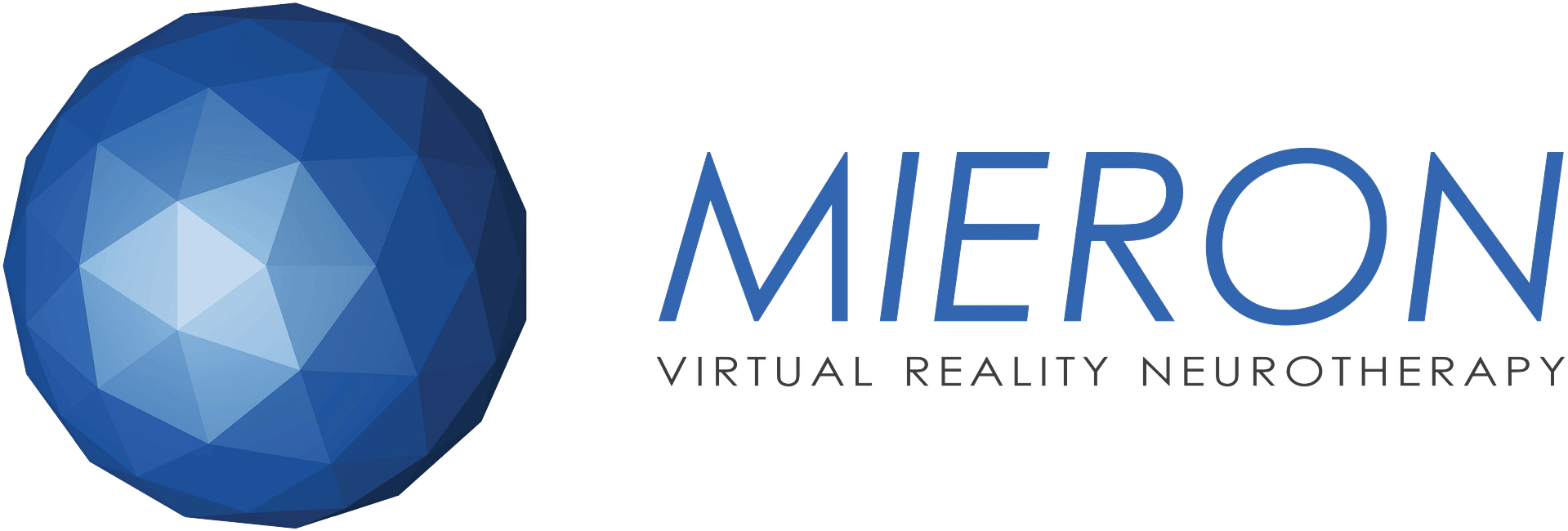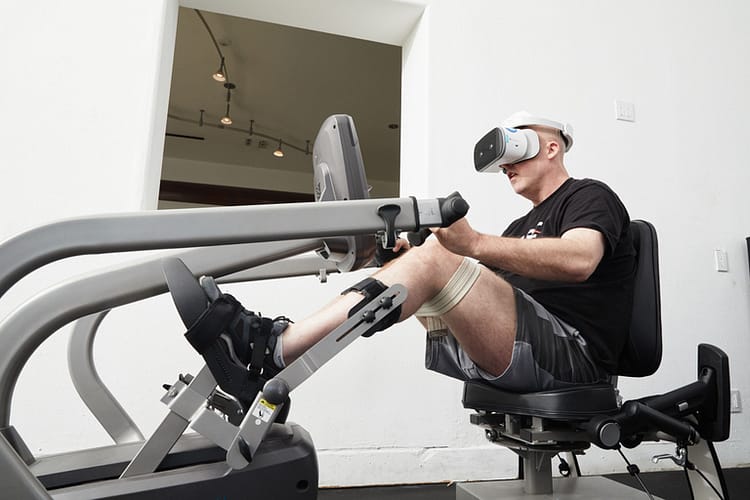People who suffer from chronic pain issues understand how difficult it can be to live a normal life while struggling with this issue. Neuropathic pain is one common type of pain that can cause lifelong issues. The Mieron Virtual Reality NeuroTherapy (VRNT) system provides a unique opportunity for various types of rehabilitation and relief from the effects of nerve damage. The results go beyond those that patients get with more traditional treatment plans. Better still, they enjoy reduced symptoms in a rewarding and emotionally supportive way.
What is Neuropathic Pain?
The term neuropathic simply means that the pain comes from the nerves. While your nervous system always transmits pain from the source to your spine and brain, the pain you feel when you stub your toe or put your finger on a hot pan does not come from the nerves themselves. It comes from the external stimulus. The sensory nerves in your finger registers extreme heat, which automatically makes you pull back from the source while the electrical impulse travels to your spinal cord and your brain and registers as pain. This is the normal and healthy way that nerves function.
Neuropathic pain happens without any stimulus that would normally cause the unpleasant sensation. It usually happens due to nerve damage from injury or nervous system malfunction due to a disease. In a way, it is the body’s response to perceived negative stimuli or a type of nerve malfunction that makes it difficult for your body system to interpret and regulate signals appropriately. There is no hot pan, hard stone, or sharp splinter triggering the nervous response. Instead, your nervous system, spinal cord, and brain register the pain for no apparent reason.
Reasons for Chronic Nerve Pain
The first thing to understand about neuropathic pain like this is that it does not go away for most people. It is a chronic problem that needs management and some type of therapeutic response to minimize the effect it has on the patient’s life. Needless to say, being in constant pain is highly disruptive to any type of lifestyle, career, or enjoyment of free time. Most people can handle pain for a few hours or a few days with little more than grumbling. Living with chronic pain for weeks, months, or years has a deleterious effect on their emotional and mental well-being in many cases.
One of the more common types of this pain is diabetic neuropathy. People with poorly controlled diabetes may experience numbness, tingling, a sense of heat, irritation, and outright pain especially in their extremities. People who have had spinal or joint injury may also end up with long-term effects from damaged nerves. Even a chronic condition like carpal tunnel syndrome can create ongoing nerve pain. Other causes include thyroid trouble, multiple sclerosis, some cancers and chemotherapy, shingles, and amputations that cause phantom neuropathic pain.
How is Neuropathic Pain usually treated?
Unless a healthcare treatment team is able to determine the underlying reason for the neuropathic pain and develop a way to cure the illness or manage the disorder better, treatment usually consists of dulling the senses enough to bring it down to a manageable level. Unfortunately, many people who suffer from chronic pain are not taken seriously by their doctors because it is very difficult to judge the precise level of discomfort and disability.
Retail and Prescription Medications
People who suffer from any type of ongoing pain frequently reach for over-the-counter medications like NSAIDs or other anti-inflammatories to take the edge off. Unfortunately, a smaller dose that works for a while may become useless over time due to the body’s worsening condition of the nerve pathways that transmit more pain. Also, when nerves malfunction and cause pain responses with a lack of stimulus, medications that remove inflammation will do nothing to make things better.
Prescription pain medications such as opioids work to dull the senses but unfortunately may cause addictions and even dangerous digestive blockages over time. Some doctors prescribe antidepressant medications for neuropathic pain, too. Although this does not treat the nerves directly, it can help stave off the associated emotional issues that often come along with long-term physical discomfort. Other options exist depending on the type of problems a specific patient experiences.
Nerve Blocks or Electrical Impulses
Targeting the nerves specifically may work to reduce or get rid of pain. The first method is to block the pain at the source with injected steroids or very strong medications or anesthetics. This requires ongoing treatment to stay effective. A more permanent solution for some people is to have a device surgically implanted in their brain or spine that uses electrical signals to block the nerve action that manifests as pain, though this option is not always medically or financially viable.
Physical and Occupational Therapy
As mentioned above, exercise and various other bodily motions like stretching can help alleviate some neuropathic pain issues. As this is the most natural and potentially useful way of making things better, many patients prefer to engage in a therapeutic strategy rather than turning to opioids or surgery from the start.
The goal of these types of therapies includes maximizing ability, relieving symptoms, and improving daily function in the most comfortable way possible. They can work for everything from diabetic neuropathy that affects entire limbs to smaller, more localized pain issues. With the right strategies in place, such as a virtual reality system that makes therapy more engaging and fun, the patient can also experience improved quality of sleep, diminished stress and depression, and a general elevation of mood and confidence.
How can MieronVR help manage neuropathic pain?
Far too many people who suffer from neuropathic pain shy away from physical activity because they believe it will make them hurt worse. In fact, ongoing appropriate exercise and therapeutic movements can actually reduce chronic pain symptoms and make them easier to manage. When it comes to the MieronVR system, the reduction in neuropathic pain happens even more.
Virtual Reality has been researched as a pain-reduction tool for everything from dental care to ongoing chronic disorders. Many studies show it to be an effective tool in minimizing discomfort and offering an effective alternative to over the counter or prescription medication and other more traditional treatment options. The MieronVR system allows the patient to transcend reality for a while, do activities that help with the physiological problem that leads to chronic pain, and experience a comfortable, entertaining, and distracting environment that engages their senses in a positive way. These innovative Virtual Reality NeuroTherapy libraries included in the Mieron product have been shown to improve quality of life for a variety of individuals with issues ranging from serious disabilities to temporary rehab needs to chronic neuropathic pain. Best of all, the people who use it enjoy a fully rewarding therapeutic process that helps teach mindfulness and mental relief practices that can combat all the negative feelings and thoughts that ongoing pain can bring.






